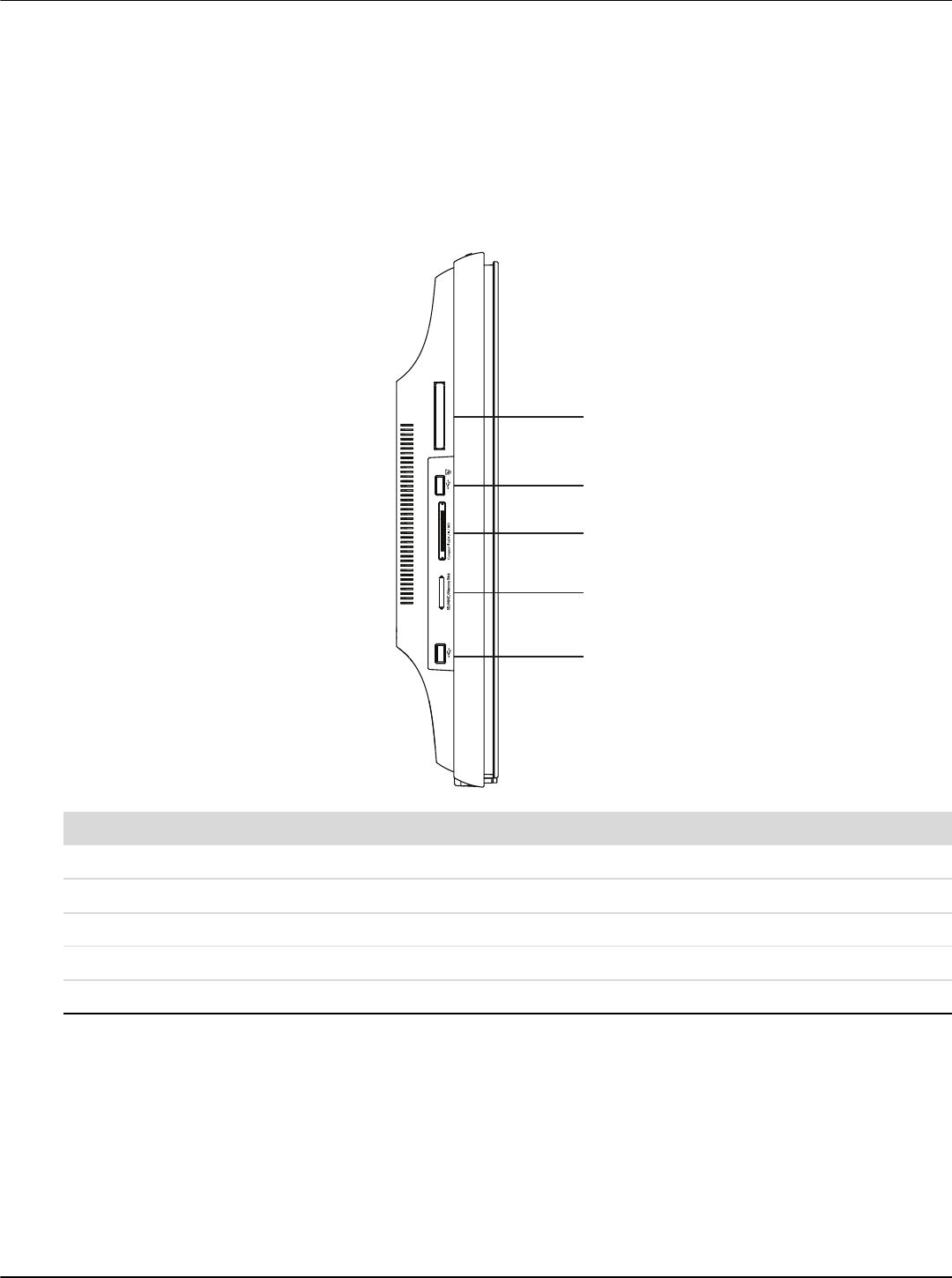- Hewlett-Packard Widescreen LCD Monitor User's Guide
Table Of Contents
- Notational Conventions
- Product Features
- Safety and Maintenance Guidelines
- Setting Up the Monitor
- Unpacking the Monitor
- Installing the Monitor
- Assembling the cantilever base
- Unfolding the double-hinged monitor
- Preparing the cantilever-base monitor for wall-mounting
- Wall-mounting the double-hinged monitor
- Preparation
- Connecting the VGA (Analog) or DVI-D (Digital) Cable
- Connecting the VGA / DVI-I Cable (Select Models Only)
- Connecting the HDMI Cable (Select Models Only)
- Audio and Video Cables and Adapters
- Connecting the Audio Cable
- Connecting the USB Hub Cable (Select Models Only)
- Connecting USB Devices to the Monitor (Select Models Only)
- Connecting the Power Cable
- Cable Management
- Adjusting the Tilt
- Adjusting the Swivel
- Keyboard Parking
- Operating the Monitor
- CD Software and Utilities
- My Display Software (Select Models Only)
- Front-Panel Controls
- Using the On-screen Display (OSD)
- Selecting Video Input Connectors
- Identifying Monitor Conditions
- Adjusting Screen Quality
- Power-Saver Feature
- Ambient Light Sensor (Select Models)
- Task Light (Select Models)
- Webcam (Select Models)
- High-Bandwidth Digital Content Protection (HDCP)
- Operating the Digital Picture Frame Card Reader (Select Models)
- Preparing the Monitor for Shipping
- Troubleshooting
- Technical Specifications
- Agency Regulatory Notices
- Federal Communications Commission Notice
- Declaration of Conformity for Products Marked with FCC Logo, United States Only
- Materials Disposal
- Chemical Substances
- Canadian Notice
- Avis Canadien
- European Union Regulatory Notice
- Disposal of Waste Equipment by Users in Private Households in the European Union
- Japanese Notice
- Japanese Power Cord Notice
- Japanese Material Content Declaration
- Korean Notice
- EPA ENERGY STAR® Compliance
- HP Recycling Program

User’s Guide 5–1
5
Operating the Digital Picture Frame Card Reader
(Select Models)
The Digital Picture Frame (DPF) card reader can be used when your computer is on or off. When your computer is on,
it can search through the memory cards inserted in the DPF card reader. When your computer is off, the DPF card
reader is capable of operating on its own; when you insert a supported memory card or USB flash drive into the DPF
card reader, it allows you to view photos, play movies, and listen to music on your DPF card reader monitor display.
The DPF card reader supports the following formats:
■ Photo: .jpg, .bmp, .gif, .png, and .tiff
■ Video: .avi, .mpg, .vob, .dat, .mp4, .ts, .divx, .xvid, and .mov
■ Audio: .mp3, .wav, .ogg, .fla, and .wma
You can operate the DPF card reader with either the remote control or the On-screen display (OSD) buttons on the
front of the monitor.
Remote Slot Description
A Remote Storage Slot
B USB 2.0 input for the DPF card reader
C Compact Flash I/II/MD
D SD/MMC/Memory Stick
E Standalone USB 2.0 connector, not compatible with DPF card reader
A
E
D
C
B










